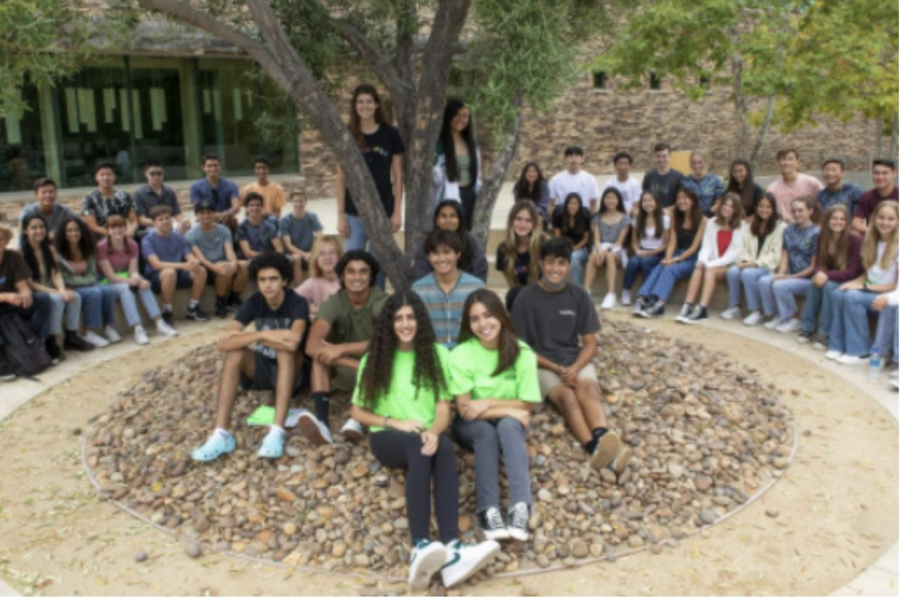Leaders and Legacy
An inside look into what student leaders do and why these student organizations are important in defining Sage culture
Student Ambassadors is the largest student leadership organization at Sage Hill School and is responsible for being representative spokespeople for the school
March 15, 2022
When you think of Sage, who or what is first to come to mind?
There are a variety of responses to that question. Students, faculty, and staff gathered around Town Square for the weekly Town Meeting. Streamers and posters scattered around the gym during Pep Rallies. The energy-crazed Club Fair. Eating Flik food during Conference. Science experiments, English discussions, history lectures, math competitions, and conversations in a foreign language. Theater performances in the Black Box and athletic events in the Ube.
The bottom line – there are many components that make Sage the school that it is. One of these components, simply put, is the students. As obvious as that sounds, students are what define the environment at Sage. “Sageyness,” however you define the term, would not exist without the student body.
So as student leadership applications are ongoing, we must keep this question in mind: what culture do we want to create at Sage, and what legacy do we want to leave behind?
Once again, there are many answers to those questions. For now, we can start off by highlighting some of the student leadership groups that represent what Sage stands for.
“Honor Committee allows students with compassion and a sense of justice to help set students on the right track,” said senior Ethan Nguyen. “Through Honor Committee, students can teach their peers about responsibility, maturity, and integrity and help us all grow as people.”
“Being a peer counselor at Sage meant I had an advisory which I met with every month,” said senior Victoria Ocampo. “What I enjoyed the most about being a peer counselor was I got to create a small community with my freshman. I’ve learned at Sage that students can talk to each other and create bonds regardless of which grade they are in.”
Other student leadership organizations at Sage include student council, Sage Advocates of Multicultural Education (S.A.M.E.), and student ambassadors. Additionally, there are numerous other ways to hone in on leadership skills and take initiative on campus through a variety of clubs and other student groups.
And to put it plainly, these groups matter. Many of these groups are student-led, which means participation in these organizations is an opportunity to take our Sage experience into our own hands. Like we said before, “Sageyness” does not exist without the students. We students are the ones who define the culture at the school. We can be compassionate or apathetic, spirited or nonchalant, proactive or reactive. We may not be in total control of our high school experience, but should we not make the most of what we do have control over?
It looks like we will realize your answer to that question during the next few months as the school year comes to an end. Until then, go Lightning!


